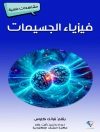This second edition course text provides a general overview of jet physics by presenting the basic experimental and theoretical problems arising when dealing with jets, and describing the solutions proposed in recent years. This book covers jet algorithms, the theory of strong interactions (QCD), and how, from a set of observed jets, it is possible to extract information about the elementary event that has produced them. As a second edition, this book builds upon and complements the first through updated and significantly expanded chapters. Fully worked-out examples within each chapter invite the reader to appreciate the relevant questions that arise in cutting-edge research on jet physics.
Key Features
- Accessible to undergraduate and postgraduate students
- Provides a concise introduction to both QCD and jet physics
- Enables the reader to access the relevant literature on the topic
- Presents the most recent advances in the field
- Contains fully worked-out examples and an extensive bibliography in each chapter
Inhoudsopgave
1 Introduction
2 Jet algorithms
3 QCD for jet physics
4 Jets as discovery tools
Over de auteur
Prof Andrea Banfi is a theoretical particle physicist, expert in the development of theoretical tools for the calculation of observables involving hadronic jets at high-energy colliders. In particular, he is active in the calculation of many observables of relevance for the physics programme of the Large Hadron Collider. He obtained his Ph D at the University of Milano in 2002, and then worked as a Research Associate for various institutions in Europe, namely NIKHEF (Amsterdam), the Cavendish Laboratory (Cambridge), the University of Milano-Bicocca, ETH Zurich, and as Assistant Professor by the University of Freiburg. In 2013, he joined the Theoretical Particle Physics group of the University of Sussex, where he is now Professor of Theoretical Physics.












